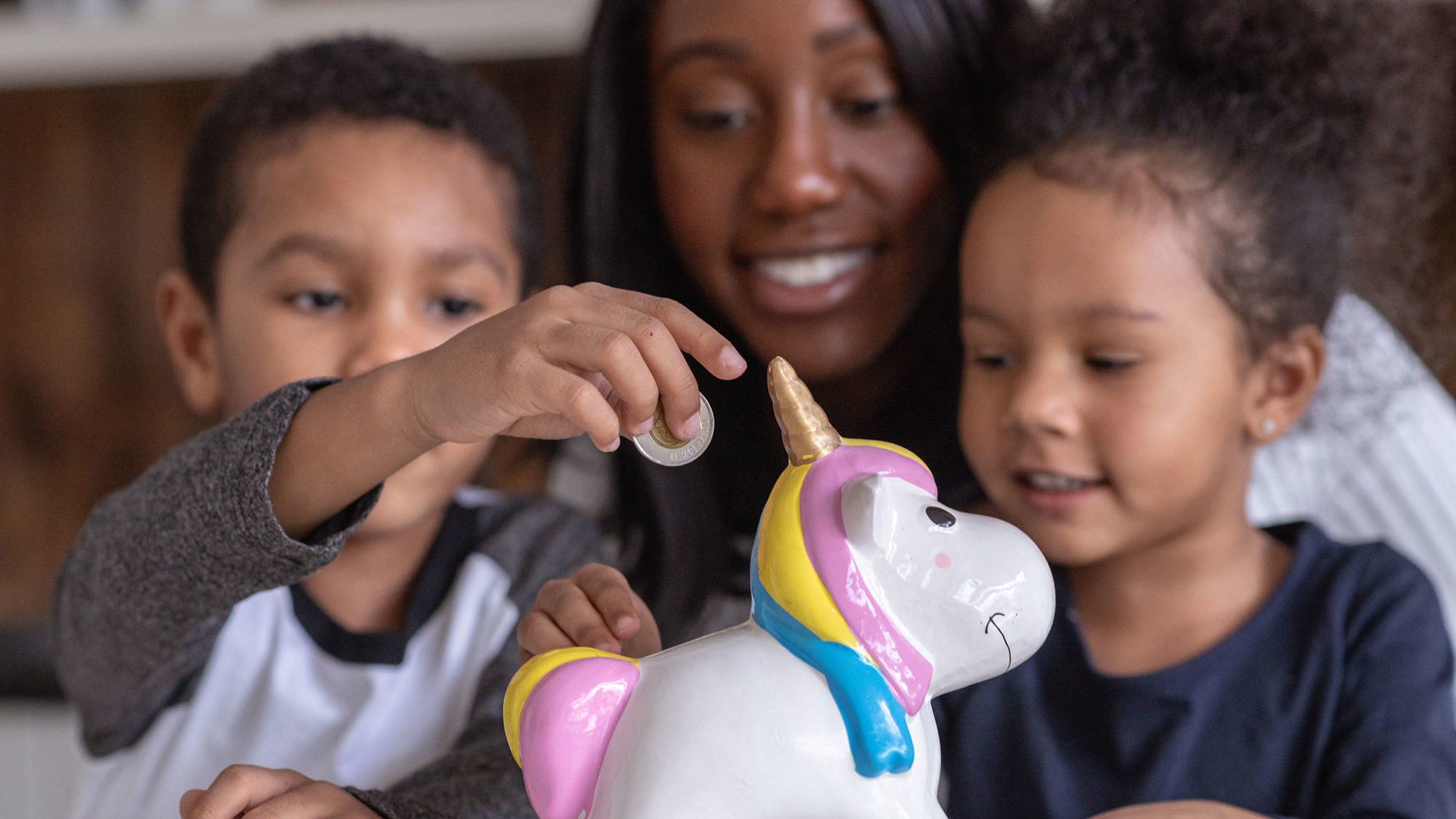It’s safe to say Alberta’s economy has faced a few challenges over the past few years. While our hard-working province of innovators and entrepreneurs is resilient, there’s no doubt many of us have been rethinking the family budget and tightening our belts. Knowing how money works—and how it works for you—is important to maintaining your financial stability. And it’s never too early to learn. By talking to your children about earning, saving and spending money (in an age-appropriate way), and by giving them tools to safely manage their own money, you’ll help bolster their financial literacy and better prepare them for navigating the modern world. Here are a few tips to get you started:
START YOUNG
“Financial literacy is critical at all ages, but it’s beneficial to learn the concepts early in life—so that responsible money management becomes almost second nature,” says Martin Harvie, director of product, marketing and communications at Bridgewater Bank. Alberta’s public education system does some of the work in this regard. Students are introduced to Canadian bills and coins in grade one, and learn more about money management—such as spending on wants versus needs, and setting savings goals—as they progress through elementary school.
Of course, it’s always useful to reinforce these lessons at home. Both the provincial and federal governments offer a variety of online tools to help you and your family become more financially literate.
MORE TO READ
T4 slips and tax tips: How to take the stress out of filing
USE REAL-WORLD EXAMPLES
Giving children an allowance is probably the most common way to teach everyday financial concepts: how money is earned (by doing work, such as household chores); how it can be spent (perhaps on a new toy within a given price range); and that it can be saved instead.
“Children need to understand that money is a finite resource,” Harvie says, adding that it can be helpful to provide opportunities for kids to visualize how money works:
• Use a clear jar for a piggy bank, so that your child can see their savings grow. Make a big deal whenever more money is added.
• When your child wants to spend what they’ve saved, have them count out the money and physically hand it over to the cashier.
• At the grocery store, introduce them to comparison shopping by showing them how similar products can have different prices.
• If you’re paying for something with a credit or debit card, take time to explain how they work, how to verify the charges and, if you’re at a restaurant, how to calculate the tip. “This way, the child sees the value of money rather than the ‘magic’ of the card,” Harvie says.
OPEN A SAVINGS ACCOUNT
For older children, consider making the transition from piggy bank to actual bank. Many of Canada’s larger financial institutions offer youth savings accounts. Making use of one can help young savers to better grasp concepts like compound interest, credit, debt and more. Generally, youth accounts are held jointly by a parent or guardian, who can access and help manage account, if necessary. Look for an account that has no monthly fee, and which allows a reasonable number of transactions for free.
TALK ABOUT INVESTING
While minors in Canada can’t play the stock market, you can still strengthen their understanding of investing by talking with them about your own investments—or making investments on their behalf. If you’ve started a Registered Education Savings Plan (RESP), for example, that opens a door to discussing things like mutual funds, rates of return, and longer-term financial planning. As they grow older, it’s important for them to appreciate the ways that individual financial decisions affect the broader economy, and vice versa.
MORE TO READ
Pioneer spirit: Alberta small business success stories
GIVE TEENS MORE FINANCIAL FREEDOM
Ideally, by the time your kids are in high school, their financial literacy should have a solid foundation. “At this stage, teenagers can be given more responsibility for things that may directly impact their lives,” Harvie says.
• If they have a youth savings account, consider giving them access to a debit card that they can use when needed.
• For parents who’d rather proceed a bit more cautiously, giving your teen a prepaid payment card can be a way to teach responsible budgeting. If they know they have, say, $50 per month for discretionary spending, they’ll have to choose wisely where and when to make use of it.
• If your teen wants to purchase something that costs more than they have, take the opportunity to teach them about the importance of repaying borrowed money. You can loan them the difference and work out a repayment schedule over a period of time—one that accounts for any interest that would be charged, had they used a credit card or taken out a “real” loan.
“It’s important to continue helping teenagers to understand the ins and outs of saving and borrowing,” Harvie says. “These are concepts they’ll frequently encounter as adults, and they’ll need to know how to do both in a way that’s most advantageous to their finances.”
WHY SAVE?
Click here to learn more about the importance of saving your money—courtesy of Bridgewater Bank, a subsidiary of AMA.
